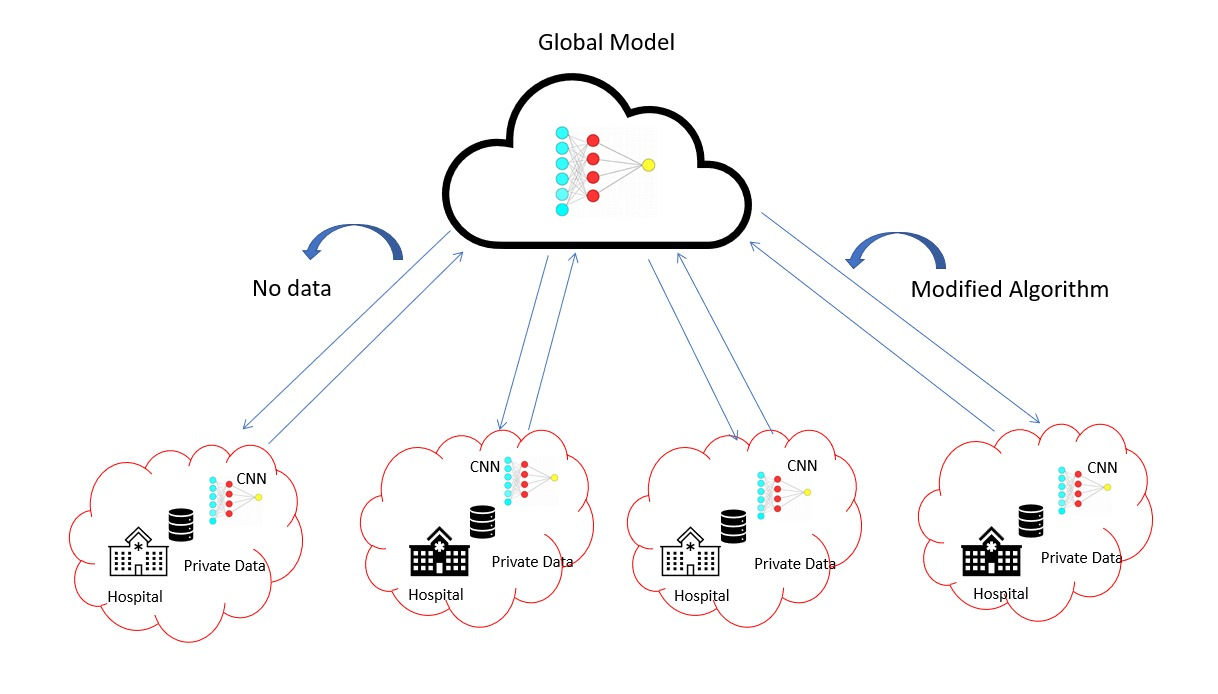 2022-07-20
2022-07-20

This paper surveys and examines how computer-aided techniques can be deployed in detecting pneumonia. It also suggests a hybrid model that can effectively detect pneumonia while using the real-time medical image data in a privacy-preserving manner. This paper will explore how various preprocessing techniques such as X-rays can detect and classify multiple diseases. The survey also examines how different machine learning technologies like convolution neural network (CNN), k-nearest neighbor (KNN), RESNET, CheXNet, DECNET and artificial neural network (ANN) can be used in detecting pneumonia disease. In this article, we have performed a comprehensive review of the literature to find how we can combine hospitals and medical institutions to train the machine learning models from their datasets so that the ML algorithms can detect disease more efficiently and correctly. We have proposed the future work of using transfer learning combined with federated knowledge that could help the medical institutions and hospitals form a combined approach of performing medical image detection using real-time datasets. We have also explored the scope, future work and limitations of the proposed solution.
Keywords: Machine learning techniques, Pneumonia detection, CNN, Chest X-ray, Transfer learning, Federated learning, k-Nearest neighbors (KNN), Artificial neural network (ANN), DECnet

本文调查并研究了如何部署计算机辅助技术来检测肺炎。它还提供了一种混合模型,可以有效地检测肺炎,同时以保护隐私的方式使用实时医学图像数据。本文将探讨 X 射线等各种预处理技术如何检测和分类多种疾病。该调查还研究了卷积神经网络 (CNN)、k-近邻 (KNN)、RESNET、CheXNet、DECNET 和人工神经网络 (ANN) 等不同的机器学习技术如何用于检测肺炎疾病。在本文中,我们对文献进行了全面回顾,以寻找如何结合医院和医疗机构从他们的数据集中训练机器学习模型,从而使 ML 算法能够更有效、更正确地检测疾病。我们提出了使用结合联合知识的迁移学习的未来工作。 这可以帮助医疗机构和医院形成使用实时数据集执行医学图像检测的组合方法。我们还探索了所提出解决方案的(适用)范围、局限性和未来的工作。
关键词: 机器学习技术; 肺炎检测; 卷积神经网络; 胸部X光; 迁移学习; 联合学习; k-最近邻(KNN); 人工神经网络(ANN); DECnet
